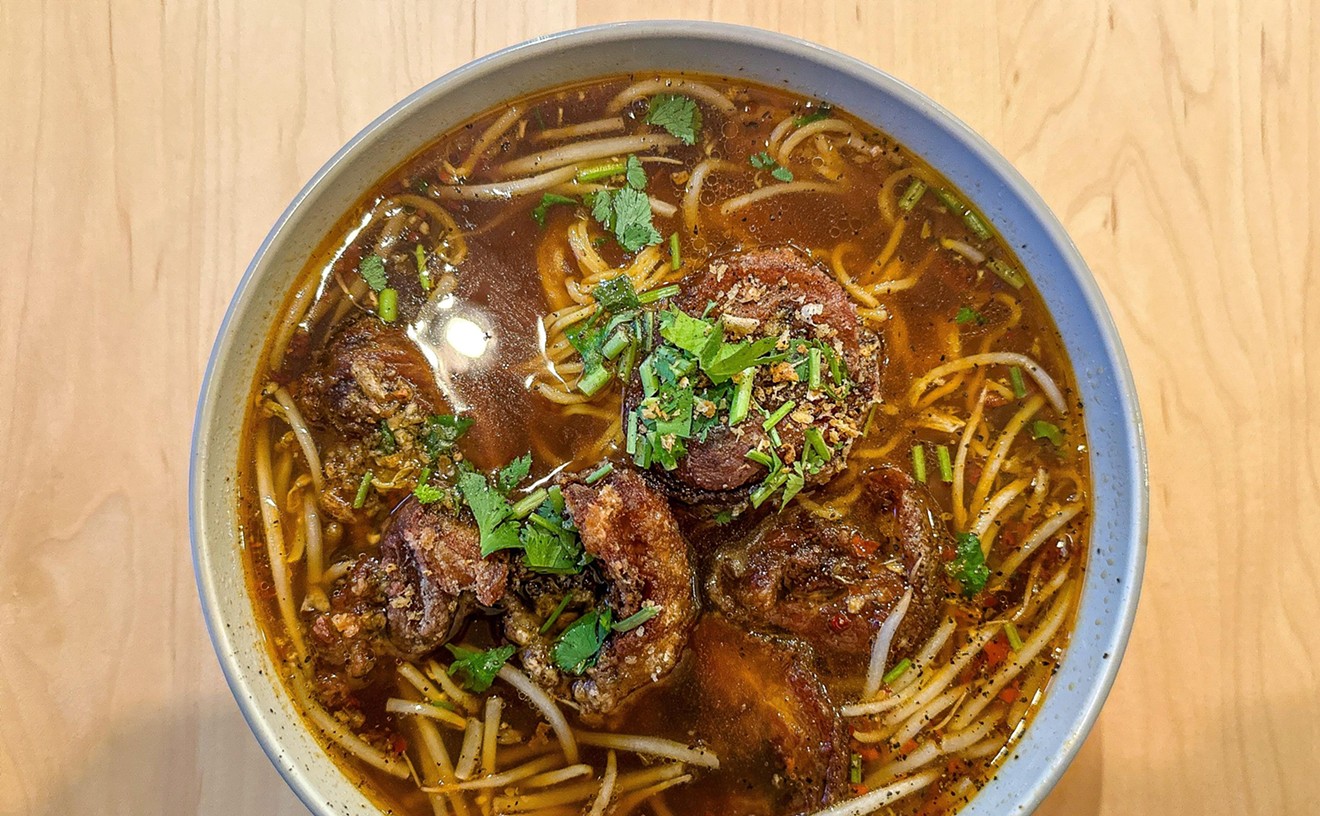If you've been to Knife, the much-loved steakhouse from chef John Tesar, you know Tesar is really interested in serving diners his kitchen's old meat. That doesn't mean he's dragging out whatever steaks have been languishing in the walk-in. Tesar's restaurant is equipped with a state-of-the-art dry-aging room that's used to age the restaurant's grass-fed steaks, and Tesar has found a way to add one of everybody's favorite rich, French ingredients into the mix.
Dry-aged foie gras isn't something you'd find in an old-school French cookbook, but Tesar imagines that it's much like a classic torchon. A foie gras torchon is made by rubbing the fattened duck liver with sugar and salt, rolling into a charcuterie-style log, and allowing it to cure for a few days in the walk-in refrigerator. Tesar's got the technique down -- he has a similar foie gras component on the menu at Spoon -- but he's curious about how age will impact the flavor and texture of the rich and fatty foie gras.
"With the tuna dish at Spoon, you don't want the aged flavors," says Tesar. "But I think it will work well with the meat that we're doing here at Knife." The flavors in fine steak and foie gras are made for each other, but Tesar isn't entirely sure yet what the end result of a 45-day aged foie gras is going to taste like, largely because he doesn't know of anyone who's ever done it before. "I was a little worried at first that this was someone else's thing, but I couldn't find anyone else who had it," he says. "I guess we'll taste it with you at the table."
Tesar also hopes to impart some of the funky flavors that develop in their dry-aged beef into the foie gras. "It should take on some of the flavor of some of those steaks, that's why we're aging them in there," he says. "I guess we'll taste it with you at the table."
The rich texture of the foie gras will likely tighten up and the mineral-y flavors of the liver will be drawn away with excess water, resulting in the "fattiest, creamiest foie gras you've ever tasted." Ultimately, the foie should have a "pate-like" taste without the addition of traditional pate ingredients.
As with everything else in Tesar's kitchen, good things come to those who wait. Monday, the foie gras had been aging for five days, and will likely rest for at least 60 days before the restaurant begins serving it in sashimi-style bites. Because he's still waiting to taste his new creation, Tesar isn't even sure how he'll cook the massive lobes of foie that he's aging or what he'll serve it with. Whether he chooses to briefly warm the foie with a torch before service or cold-smoke it, the two techniques he's considering now, you can probably guarantee that it's going to be really good.










